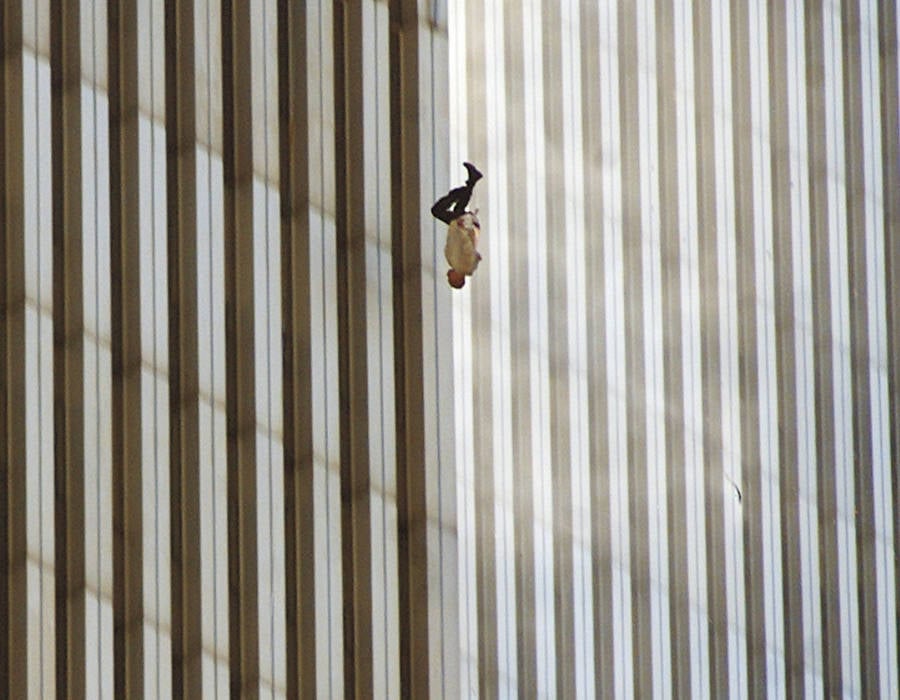On September 11, 2001, the world witnessed a tragedy that left an indelible mark on history, and among the many heartbreaking images that surfaced was that of a man falling from the North Tower of the World Trade Center. This moment captured the attention of millions and raised countless questions about the identity and fate of this enigmatic figure, often referred to as the "Falling Man." In the years that have followed, the image has become a symbol of the horrors of that day, prompting discussions about the human experience amid disaster.
In the aftermath of the attacks, the identity of the Falling Man sparked intense media interest and public speculation. Many were drawn to the haunting photograph, which encapsulated the desperation faced by those trapped in the towers. As details began to surface, the quest to uncover the truth about who this man was became a poignant reminder of the individual lives lost during the attacks, each with their own story and legacy.
Today, we delve deep into the life and legacy of the Falling Man, exploring not only his identity but also the circumstances that led to that fateful fall. Through examining his biography, personal details, and the ongoing impact of his story, we aim to pay tribute to the lives affected by the tragedy of 9/11 while seeking to understand the human experiences that unfolded on that fateful day.
Who Was the Falling Man 911?
The Falling Man's identity was revealed to be **Richard Drew**, a 43-year-old chef from the Windows on the World restaurant located on the 107th floor of the North Tower. He was one of the many victims who faced unimaginable choices as flames engulfed the building. Drew’s story is not just about his tragic end but also about his life before that day, his family, and the legacy he left behind.
What Do We Know About Richard Drew?
| Personal Details | Information |
|---|---|
| Name | Richard Drew |
| Age | 43 |
| Occupation | Chef |
| Location | Windows on the World, New York City |
| Family | Wife and two children |
How Did Richard Drew Become the Falling Man?
On that tragic day, Richard Drew was working at Windows on the World, one of the most renowned restaurants in the world, situated at the top of the North Tower. When the first plane struck, he was faced with the horrifying reality of being trapped above the impact zone. As smoke and flames spread through the building, Drew, like many others, was left with unimaginable choices.
Eyewitness accounts suggest that many individuals, including Drew, made the desperate decision to jump rather than succumb to the flames and smoke. This act, while heart-wrenching, was indicative of the sheer panic and horror that engulfed those inside the towers.
Why Did the Falling Man's Image Resonate So Deeply?
The image of the Falling Man, captured by photographer Richard Drew (not to be confused with the Falling Man himself), became a haunting symbol of the tragedy of 9/11. The stark contrast of a single human figure against the backdrop of chaos resonated with viewers, evoking a deep emotional response.
What Impact Did the Falling Man Have on Society?
The Falling Man has served as a poignant reminder of the human cost of the 9/11 attacks. His story is a part of a larger narrative that seeks to honor the memories of all victims. The image has inspired discussions about mortality, the human experience in crises, and the need for compassion in the face of tragedy.
How Has the Falling Man's Legacy Evolved Over Time?
In the years following 9/11, the Falling Man's legacy has transformed from a mere photograph to a symbol of resilience and remembrance. Documentaries, books, and discussions have emerged, focusing on the lives of those lost that day, including Drew. Efforts to humanize the victims and their stories have become increasingly important as time has passed.
What Can We Learn from the Story of the Falling Man 911?
The story of the Falling Man is a powerful reminder of the fragility of life and the importance of cherishing every moment. It brings to light the human experiences that often get lost in the broader narratives of tragedy. As we remember Richard Drew, we are encouraged to reflect on the value of empathy, compassion, and the interconnectedness of human lives.
How Can We Honor the Memory of the Falling Man?
Honoring the memory of Richard Drew and the countless others who perished on 9/11 can be done in various ways:
- Engaging in community service and acts of kindness.
- Participating in remembrance events on September 11 each year.
- Sharing stories of those affected by the tragedy to keep their memories alive.
- Advocating for peace and understanding among different communities.
What Steps Can We Take to Prevent Future Tragedies?
The tragic events of 9/11 serve as a grim reminder of the importance of security, preparedness, and global cooperation in preventing such atrocities. By fostering dialogue, understanding cultural differences, and strengthening community ties, we can work towards a world that prioritizes peace and safety for all.
In conclusion, the story of the Falling Man 911 is one that transcends the individual tragedy of Richard Drew, echoing the collective loss felt by a nation and the world. As we continue to explore the depths of this narrative, we are reminded of the power of stories to connect us, inspire us, and ultimately, to heal us.
Unlocking The Mystique Of Shang-Chi: Where To Download The Movie?
Unraveling The Tragedy: The Susan Smith Documentary
Discovering The Mystical World Of The April 24 Zodiac Sign


